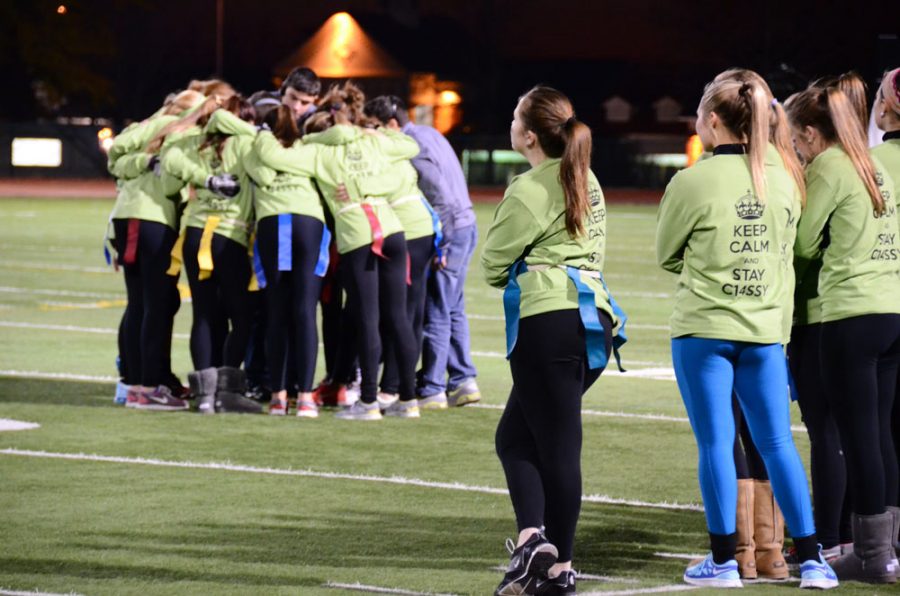As always, there are high expectations for the New Year, and 2016 is no exception. With such expectations also come numerous New Year’s resolutions, in which people attempt to make change in some aspect of their lives. One of the most common resolutions include new fitness regimens and attempts at becoming healthier, according to a report by the Statistic Brain Research Institute.
This is no surprise, as exercise and fitness is one of the best ways to stay healthy.
Some of the health benefits of exercise, as listed in a report by the Centers for Disease Control and Prevention (CDC), include a significantly reduced risk of developing cardiovascular disease and an increased possibility of having a longer life. Yet many Americans put off exercise as ‘too hard’ or give the age-old excuse of ‘not having time’. In fact, the CDC conducted a report in 2011 which found about 80 percent of surveyed Americans did not receive the recommended guidelines for exercise.
Jonathan Ross is a 2006 Personal Trainer of the Year for the American Council on Exercise (ACE), a 2010 Personal Trainer of the Year for the IDEA Health and Fitness Association, a fitness expert for Discovery Health, owner of Aion Fitness and author of the fitness guide “Abs Revealed.” Ross, who has been ranked as one of the Top 100 Trainers in America by Men’s Journal Magazine, said that there are several psychological and physical benefits of exercise, some of which are less known than others.
“[Benefits of exercise] include mood elevation, being in better spirit and getting better sleep, since you actually rest more effectively when you’re exercising and you make your uptime a little more up and stimulating,” Ross said. “It makes your downtime more beneficial, makes you feel better about everything, makes you a better problem solver and it helps your brain function better.”
Ross said in order to gain many of these benefits, aiming towards a multifaceted approach is the best exercise and fitness strategy for those in the general population, as doing so will help provide several physical benefits such as flexibility and strength. These benefits, he said, will last as long as an individual continues to undertake such various exercise techniques.
“Whatever you’re doing, you’d want to do something that trains agility, balance, coordination, endurance, strength, power and mobility,” Ross said. “If your program trains all of those sometimes, that’ll be a good way to maintain fitness. The percentages don’t even matter, because for the general population, your physical needs are not specific enough to warrant spending additional time on any one of those categories.”
Health teacher Wendy Sheehan agrees but places a slightly higher emphasis on aerobic exercise. Sheehan, who has a master’s degree in health education, said doing so will improve cardiorespiratory fitness and endurance and will keep the heart and body healthy in the long term. She also explained that a higher emphasis on cardiovascular exercises can also drastically reduce the risks of developing chronic disease.
“If you worked out for an hour, which is the recommendation for a teenager, 45 minutes of that hour should be aerobic exercise and 15 minutes should be things that are improving flexibility, muscle strength and bone density, so that you’re building strong bone,” Sheehan said. “We also definitely want to make sure that you’re doing things like resistance training or weight training just a little bit a couple times a week.”
Weight training provides vital physical benefits which can be helpful as one ages. While cardiovascular endurance aids in heart health, weight training further enhances overall bodily benefits. Among these several advantages, according to a report by the CDC, include a dramatically reduced chance of developing arthritis, osteoporosis and diabetes. Resistance training also helps to strengthen bones and muscles throughout the body, which is an extremely valuable advantage to have in older ages, when muscles begin to weaken and bone mass begins deteriorating.
“I think lifting weights can be really beneficial for people trying to get in shape,” junior Madison Wright, a member of the girls’ swimming team, said. “It burns a lot of calories and boosts your metabolism in addition to strengthening muscles, which helps with other exercises or sports. With swimming, we have three practices a week where we do strength training, so lifting weights and running and fun stuff like that.”
While exercise alone is arguably the most important aspect of fitness, other details within the fitness spectrum cannot be ignored. One of the most overlooked facets of fitness is nutrition, which Ross believes can be a determining factor in an individual’s health levels and overall well-being.
“The most important thing in keeping things very simple is to eat real food such as dairy products, fruits, vegetables, anything that you know where it came from,” Ross said. “Heavily processed foods are the ones that cause the most havoc in the body, creating the most confusion to our hormones. It’s really important that we eat clean food first and worry about the specifics on whether to go vegan, omnivore or vegetarian later.”
For athletes such as Wright, nutrition is a critical component of physical fitness. According to a report from the Nutrition Working Group of the International Olympic Committee, any athlete adopting proper nutrition in their diet will benefit with improved athletic performance, boosted recovery after workouts and maximum gains in athletic performance when coupled with proper training methods.
“I think that awareness in general is really important to overall health and fitness,” Wright said. “Making conscious decisions about what you’re putting into your body and drinking enough water is really crucial, even for those who don’t participate in sports or do a lot of exercise.”
Despite the fact that exercise does provide several physical and healthful benefits, it is imperative that anyone who trains avoids excessive training. Repercussions from extreme levels of exercise include decreased maximum oxygen uptake, stiffness and injury, according to a report taken from the Association for Body Image Disordered Eating (ABIDE),
“I would tend to say any form of physical activity that you do too much of without properly recovering or balancing out different abilities of the body is bad. The [exercise] that is probably done too much in modern American society is running,” Ross said. “I’m not against running, but it’s just that many people are hurting from running. I’ve seen people that are walking with a limp, they’re in pain when they move and they still feel like they have to go to their training run if they have a run coming up. But when you’re body’s hurting, it’s a sign that something’s wrong. Take a break from what you’re doing and assess where the pain is if there’s an injury.”
With the winter season in full swing and New Year 2016 right around the corner, there’s no better time to begin a fitness endeavor. Starting exercise and proper nutrition right now will get anyone the dream body they’ve always wanted. In addition to that, they’ll be healthy and in a much better physical and emotional state.
By incorporating a vast variety of exercise techniques, proper nutrition and positive motivation into someone’s lifestyle, everyone has the ability to attain not only a fit body, but also numerous healthful benefits, including positive body image and a reduced chance of developing several diseases. But how exactly would someone start this tough, yet rewarding trek towards fitness? Sheehan has two words for those desiring to undertake that journey: “Power down.”
“In other words, get off the phone, get off the iPad, get off the computer, turn off the TV, turn off the video games and get moving,” Sheehan said. “Then stay within your calorie needs and burn some calories through exercise. Easier said than done.”
Will you begin an exercise or fitness routine this winter? Leave a comment below and let us know!
Categories:
How to get fit and healthy this winter
December 24, 2015
0
Tags:
More to Discover



















































































